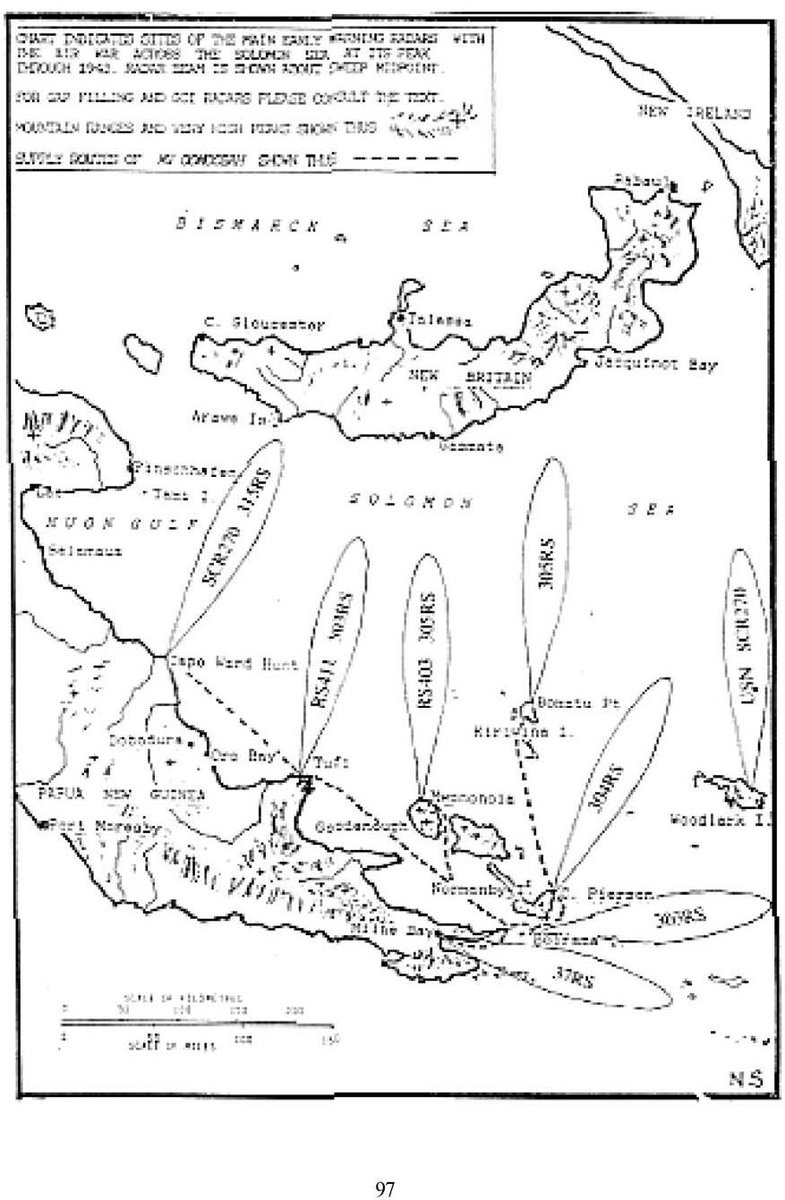
This thread is about how WW2 Japanese radar technique evolved under the threat of GHQ, SWPA Section 22 radar hunting aircraft.
This photo shows Sec 22 radar hunting coverage from the month of Nov. 1944 /1
This photo shows Sec 22 radar hunting coverage from the month of Nov. 1944 /1

In Nov 1944 two uniformed New Zealand Physicists of Field Unit 13 installed a locally fabricated antenna to the end of a AN/APA-24 direction finder system and put that with a radio receiver & pulse analyzer inside "Beautiful Ohio." /4 





She worked well & begat a copy in 5th AF.
Dirty Dora 2 was Capt. Victor Tatelman baby, a veteran B–25 pilot on his 2nd tour to the SWPA as a Section 22 staff officer. Tattelman worked with Harvard Radiation Research Laboratory (RRL) tech reps to make her in Feb 45. /5
Dirty Dora 2 was Capt. Victor Tatelman baby, a veteran B–25 pilot on his 2nd tour to the SWPA as a Section 22 staff officer. Tattelman worked with Harvard Radiation Research Laboratory (RRL) tech reps to make her in Feb 45. /5

Starting in Feb 1945 Dirty Dora 2 began her Philippine career as a radar hunter as was credited with destroying eight Japanese radars there and around the South China sea. /6 

Field Unit 13 commander Major Collins, during a Nov 1944 ferret mission, showed that when the aircraft was dedicated to ferret work. A radar site could be located within a half mile radius and attacked.
This got him a radar equipped B-24 to do it better & farther Mar 1945(+) /7

This got him a radar equipped B-24 to do it better & farther Mar 1945(+) /7


The Japanese land based radar operators were extremely quick to pick up on what was happening to them.
This is a photo taken from USN PV-1 Ventura of Section 22 Field Unit 11 in January 1945, a little over two months since the H-K Ferret operations started in Nov 1944. /8
This is a photo taken from USN PV-1 Ventura of Section 22 Field Unit 11 in January 1945, a little over two months since the H-K Ferret operations started in Nov 1944. /8

The lessons of Sec 22 H-K ferret aircraft to both IJA & IJN radar operators were not limited to the boundaries of the SWPA. This was the last IJA radar captured in WW2 at Okinawa.
The Japanese ran the "Red Queen's Race" with Sec 22 & the USN paid for those lessons. /end
The Japanese ran the "Red Queen's Race" with Sec 22 & the USN paid for those lessons. /end

@threadreaderapp unroll
• • •
Missing some Tweet in this thread? You can try to
force a refresh

























